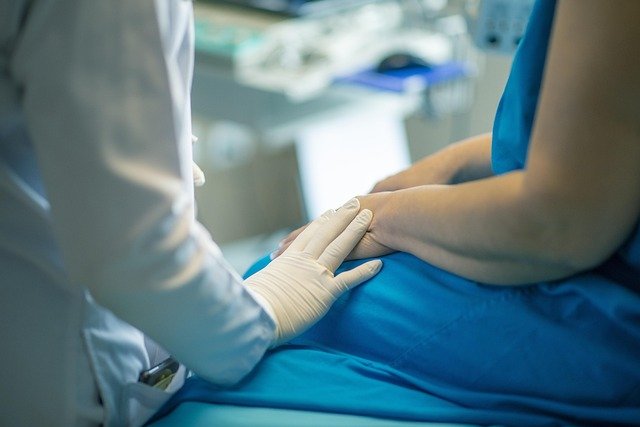Best Ear Wax Removal: Safe, Effective Options and How to Choose
Ear wax buildup can cause discomfort, hearing difficulties, and irritation, but choosing the right removal method is crucial for your ear health. From gentle home remedies using mineral oil and ear drops to professional treatments by ENT specialists, understanding your options helps you make informed decisions. This comprehensive guide explores safe removal techniques, when to seek professional help, and how to prevent future buildup while protecting your delicate ear canal.

Ear wax serves as a natural protective barrier for your ears, but excessive buildup can lead to hearing problems, discomfort, and infections. Understanding the various removal options available and knowing how to choose the safest approach is essential for maintaining optimal ear health without causing damage to your delicate ear canal.
Understanding Ear Wax: Causes, Benefits, and When Buildup Becomes a Problem
Ear wax, scientifically known as cerumen, is produced by glands in the outer ear canal and serves several important functions. It traps dust, debris, and bacteria while providing natural lubrication and antimicrobial protection. The wax typically moves outward naturally through jaw movements like chewing and talking.
Problems arise when wax production exceeds natural removal, often due to factors like narrow ear canals, excessive hair growth, frequent earphone use, or attempts to clean ears with cotton swabs that push wax deeper. Symptoms of problematic buildup include hearing loss, earache, tinnitus, dizziness, and a feeling of fullness in the ear.
Safe Home Methods: Ear Drops, Mineral Oil, and Gentle Irrigation
Several home remedies can safely soften and remove ear wax when used correctly. Over-the-counter ear drops containing ingredients like hydrogen peroxide, glycerin, or saline are designed to soften hardened wax. Mineral oil is another gentle option that lubricates and loosens wax without irritation.
For irrigation, use a rubber bulb syringe with warm water, tilting your head to allow the water to drain naturally. However, avoid cotton swabs, bobby pins, or other objects that can push wax deeper or damage the ear canal. Never attempt irrigation if you have a perforated eardrum or ear infection.
Professional Removal: When to See an ENT, Audiologist, or Trained Clinician
Professional removal becomes necessary when home methods fail or when you experience severe symptoms like significant hearing loss, intense pain, or discharge. ENT specialists use specialized tools like otoscopes, curettes, and suction devices to safely remove impacted wax under direct visualization.
Audiologists also provide professional cleaning services and can assess hearing function before and after removal. Some primary care physicians and trained clinicians offer ear irrigation services using specialized equipment that provides controlled pressure and temperature.
How to Choose a Product or Service: Features, Safety, and Evidence to Look For
When selecting ear wax removal products, prioritize those with clear ingredient lists and FDA approval where applicable. Look for products specifically designed for ear use, avoiding harsh chemicals or abrasive materials. For home irrigation kits, choose those with pressure control mechanisms and clear instructions.
For professional services, verify the practitioner’s credentials and experience with ear care. Ask about their sterilization procedures, equipment types, and approach to patient safety. Evidence-based practices should include proper examination before treatment and follow-up care recommendations.
| Service Type | Provider | Cost Estimation |
|---|---|---|
| Home Ear Drops | Pharmacy Brands | $5-15 per bottle |
| Professional Irrigation | Primary Care Clinic | $50-100 per session |
| ENT Specialist Removal | Medical Center | $150-300 per visit |
| Audiologist Cleaning | Hearing Center | $75-150 per session |
Prices, rates, or cost estimates mentioned in this article are based on the latest available information but may change over time. Independent research is advised before making financial decisions.
Prevention and Aftercare: Hygiene Tips and When to Schedule Follow-Up Care
Preventing excessive wax buildup involves avoiding cotton swabs and allowing natural wax migration to occur. Regular gentle cleaning of the outer ear with a washcloth during bathing is sufficient for most people. Those prone to buildup may benefit from periodic use of softening drops as preventive maintenance.
After professional removal, follow your provider’s aftercare instructions, which may include keeping ears dry for 24-48 hours and avoiding swimming or aggressive cleaning. Schedule follow-up appointments if you experience recurring symptoms or have conditions that predispose you to wax buildup.
Monitor your ears for signs of infection, including increased pain, fever, or unusual discharge, and seek immediate medical attention if these occur. Most people can maintain healthy ears with proper preventive care and occasional professional cleaning when needed.
Choosing the right ear wax removal approach depends on the severity of buildup, your comfort level with home treatments, and any underlying ear conditions. While gentle home methods work for minor accumulations, professional removal ensures safety and effectiveness for more challenging cases, helping you maintain optimal ear health and hearing function.




